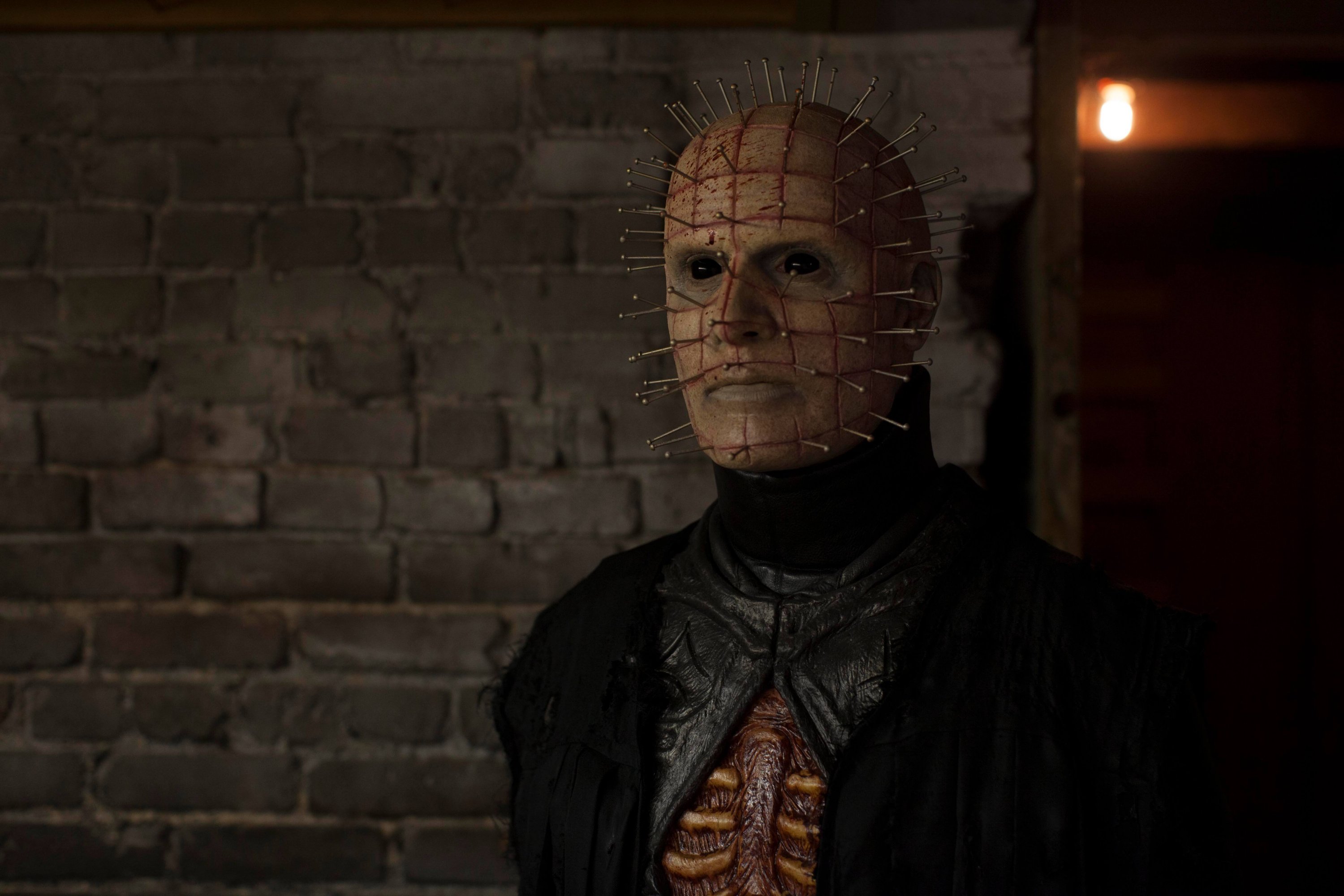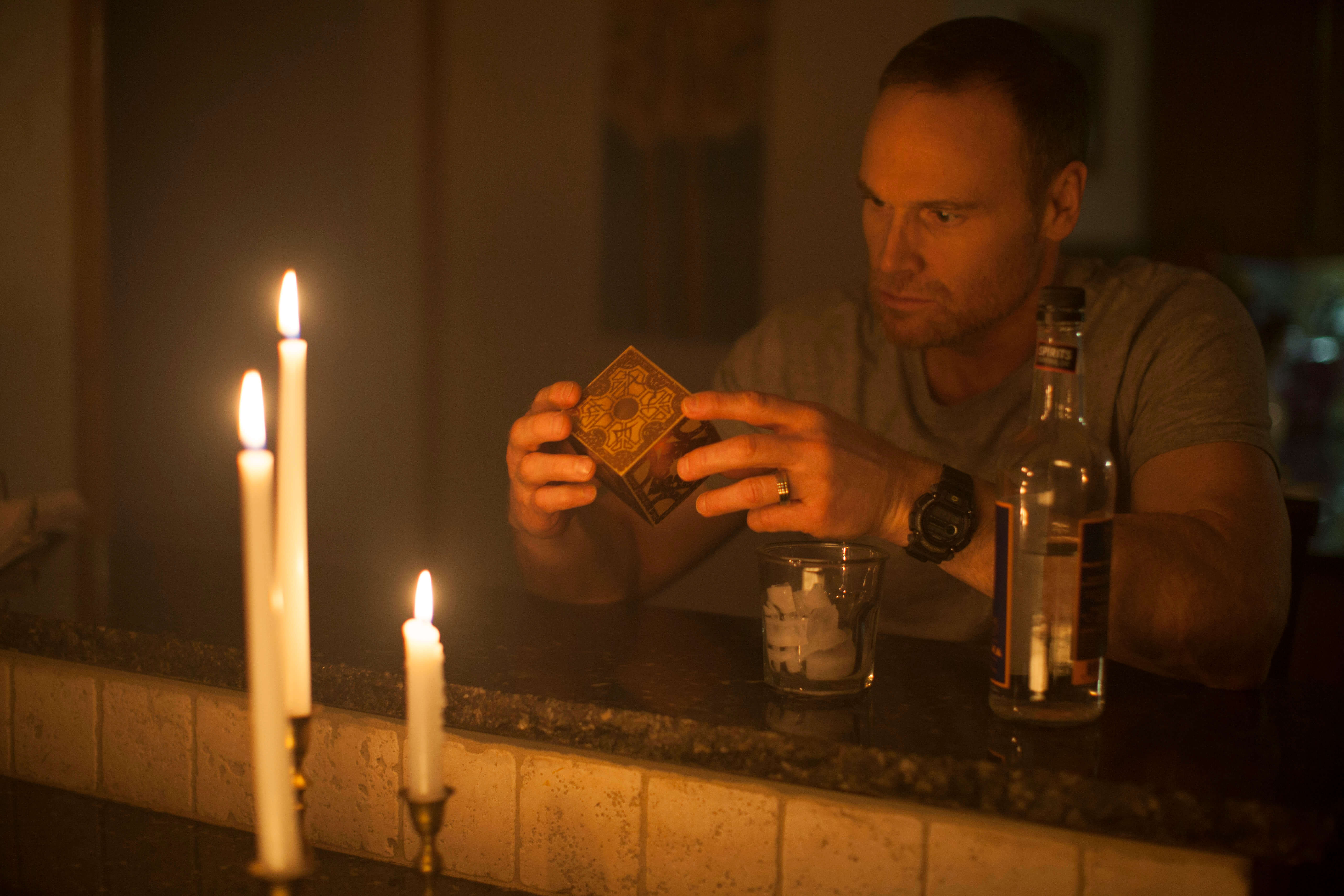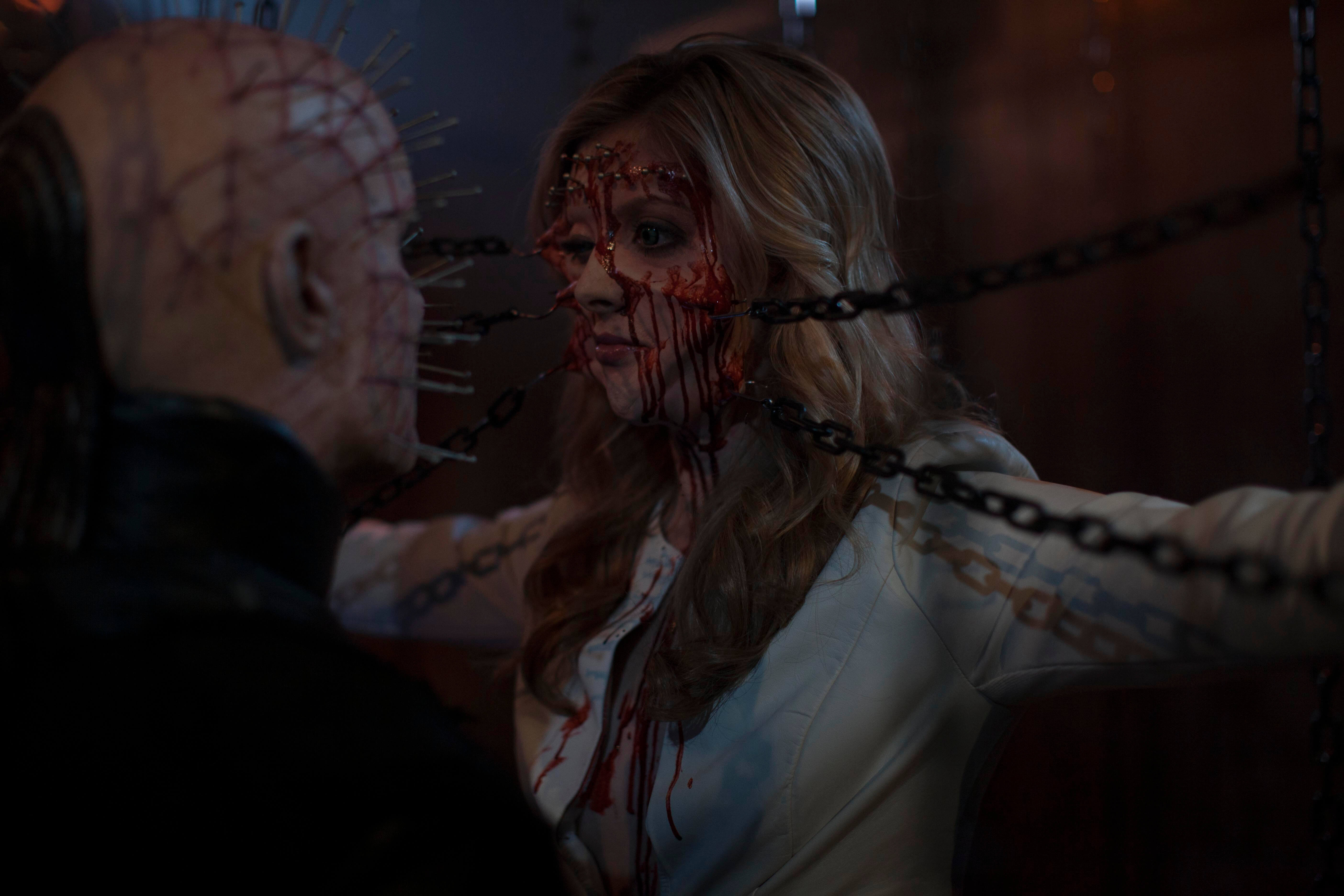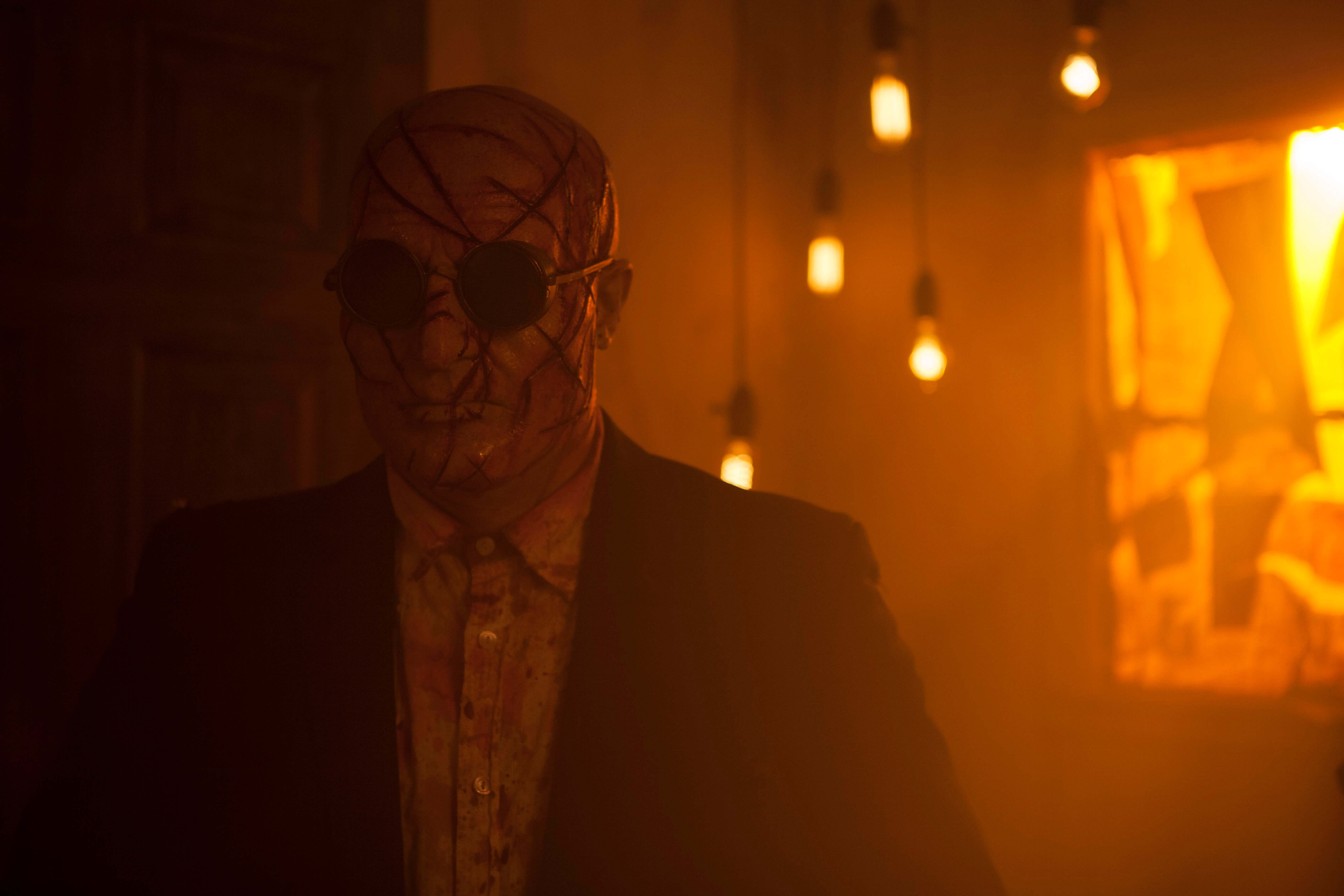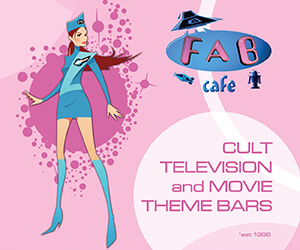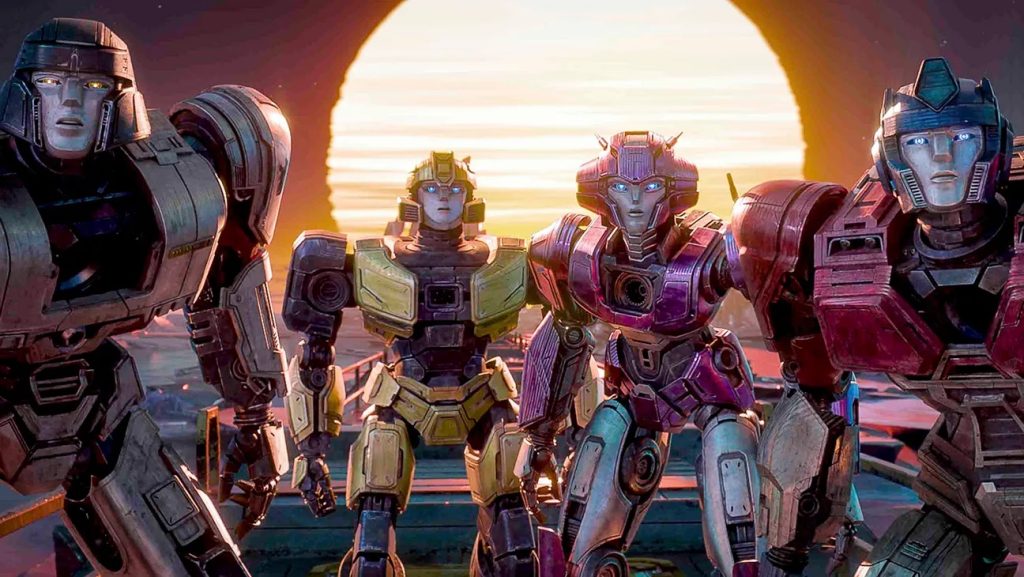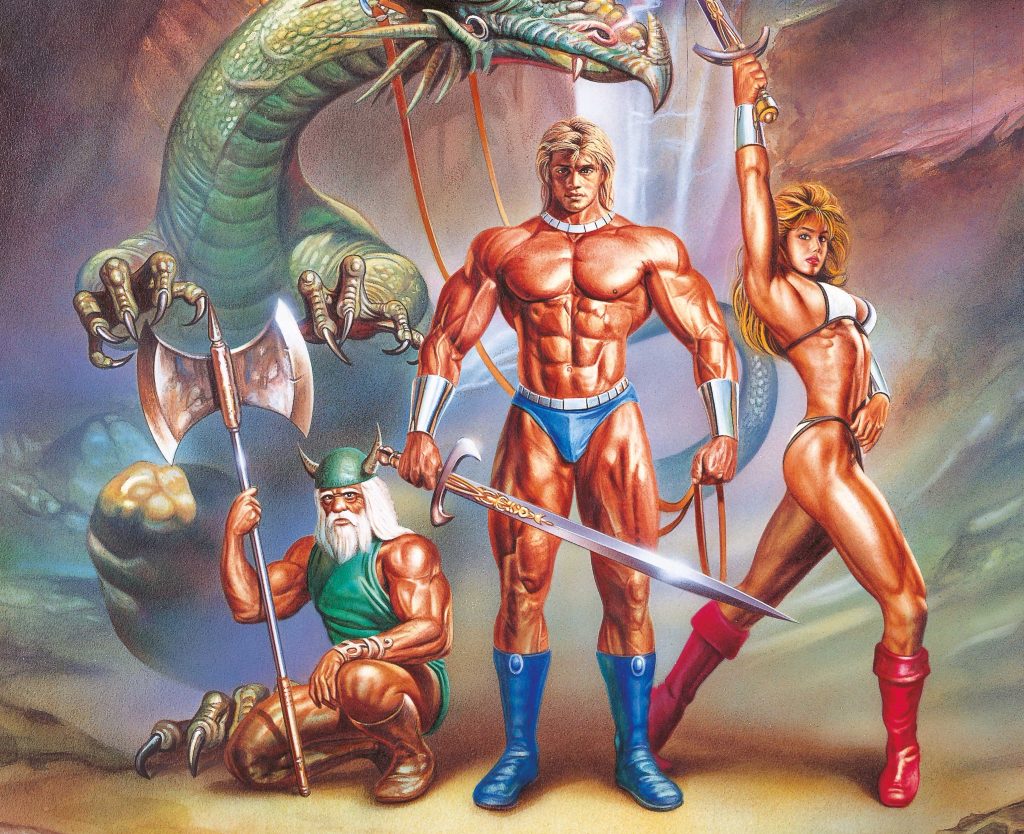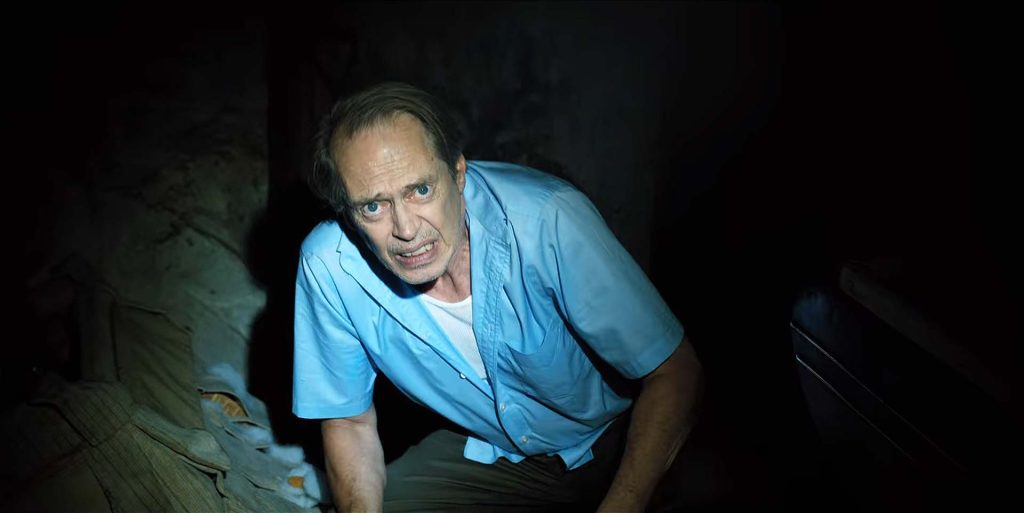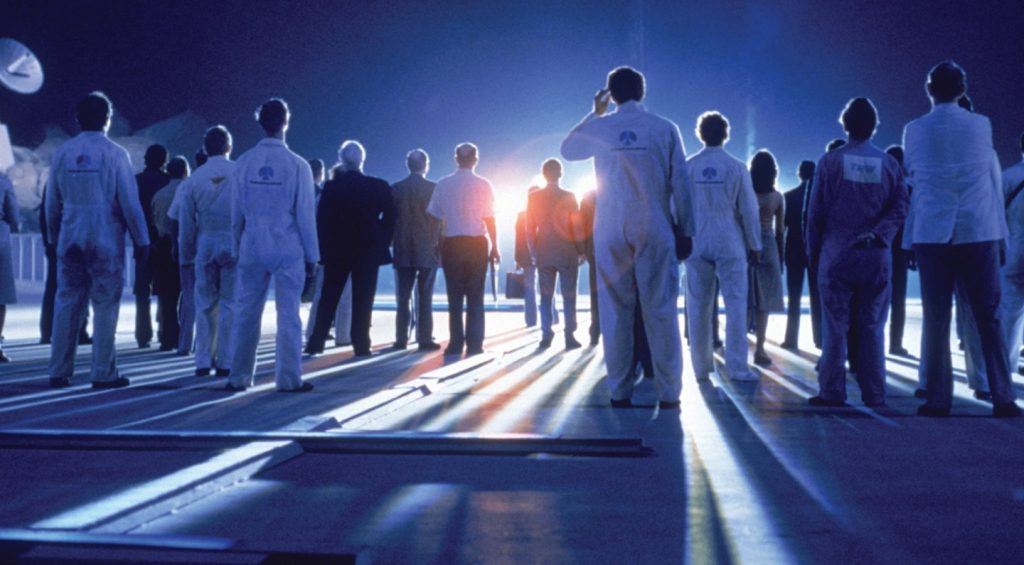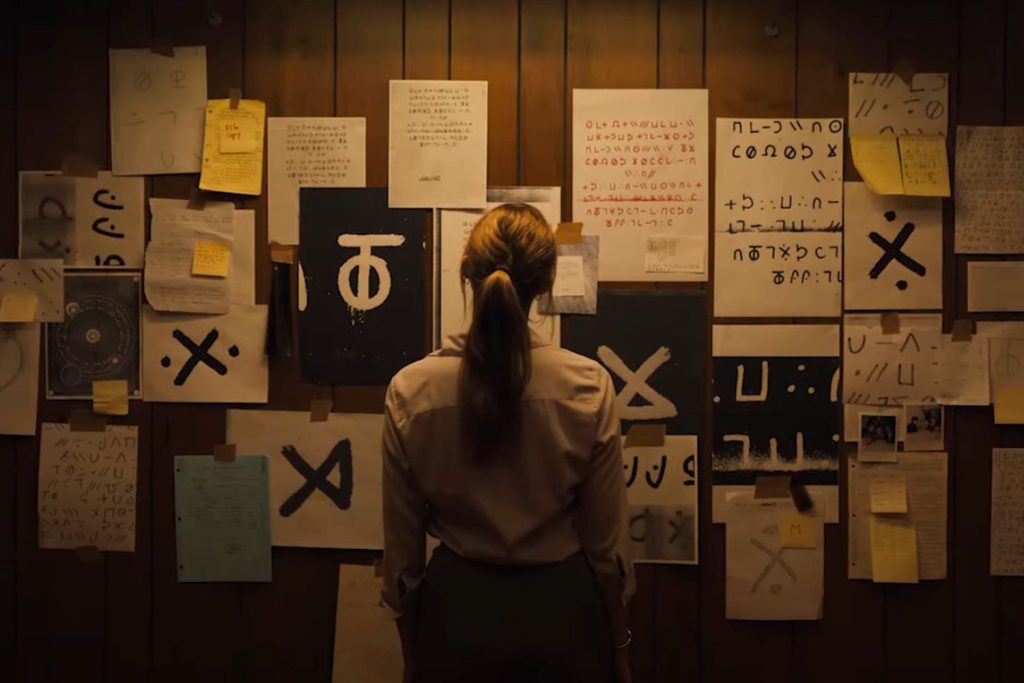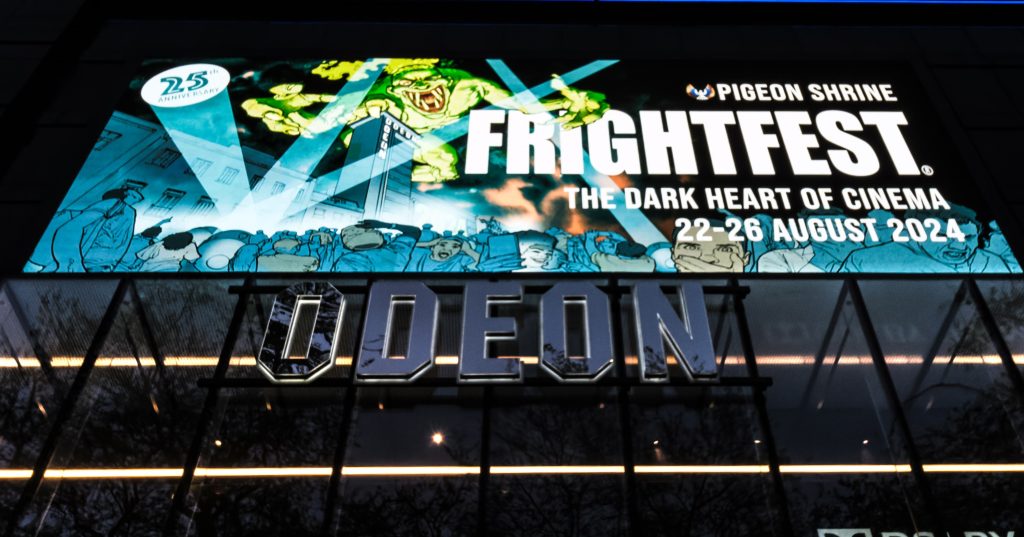As we have a new entry into the Hellraiser franchise, Hellraiser Judgement, we caught up for the director Gary J. Tunnicliffe, who has a long history with the series as he handled the special effects on all the films since the third film…
STARBURST: There was quite a long development to get to Hellraiser Judgement. A few different starts in terms of pitches. Can you tell us how you got to this point?
Gary J. Tunnicliffe: Initially, I got called and they said “look, it’s not the film we’d like to offer you, we’d like it to be a bigger budget, it isn’t, its 400,000, and would you like to do it?” And I was like “yes, I would do it for $20, a Big Mac, and a video camera, so I’m in.” I’d had this idea for a script called Judgement, which I’d already written and taken all the Hellraiser stuff out of it because I knew I didn’t own those rights, so there was stuff that was ready to be put back into it. So I suggested Judgement, did a treatment and they were like “no, that’s awful, it’s too weird, it’s too strange, what the hell is all this audit crap? We don’t want that” and I was like “you have to understand Hellraiser needs something a bit different” and they said “ok, go away and rewrite it then”. I rewrote it, sent it to them and they said “no, still too weird, still too strange, we don’t get it.” Third time “no, too weird, what’s all this spitting in the mouth and weird Auditor guy and all this”. So then I said ‘OK, I’m going to write two pitches for you” and I rewrote Judgement and I sent them a thing called Hellraiser: Enter Darkness which was a very traditional Hellraiser tale, and of course, they read it and said ‘We love Into Darkness. It’s fantastic, this is exactly what we want” but it was just a complete retread of Hellraiser. And I said “I understand, but I’m telling you now Judgement is the film to make.” And they said ‘Ok then, if you believe in it so much, here’s the deal. You will write Judgement for us and if we don’t like it, you’re writing Into Darkness for free.” And like an idiot I said ok, and they read it and luckily it was one of those nice meetings and they went ‘we actually quite like Judgement, we get it now; we understand what you want. We have a few notes.” And you’re like ‘oh, fucking hell’ and of course, it begins the period of every writer’s misery which is trying to implement the notes you like into the script and ignore the ones you really hate hoping people will forget about the terrible notes. And that’s all I did for about two months of rewrites. It’s always a compromise but I think the movie is about 65% of what I wanted to do. At one point during the edit process, they asked if we could lose the whole audit scene and Auditor, and I said “are you mad? That’s the stuff horror fans will gravitate towards and enjoy, and it’s what gives a different angle to Hellraiser”. It wasn’t too painful, only a couple of months of rewrites but there was definitely a lot of back and forth.
The auditing bit is what sticks out the most. You’ve expanded more and brought more into it Hellraiser.
I’ve been maligned for it and rejoiced for it. All horror films tend to polarise. There’s definitely a lot of people wondering what the whole audit thing is about, but I felt it was important to innovate and not replicate, which is something I’m trying to do all the time now. Let’s not just rehash the same thing, let’s put a fresh spin on it. And I needed an antagonist who could speak again, and I don’t like having Pinhead just turn up and talk because he becomes a bit of a Bond villain – we all know what’s going to happen – so I thought the Auditor would be an interesting foil, and I like the idea of this other segment of hell. They’re not Cenobites, they’re the Stygian Inquisition as I call them. I thought it would be interesting to be in a hell world and see what goes on in this bureaucratic situation. I also really wanted to bring in the idea of Christianity. I’m not religious personally but in Hellraiser II, Pinhead literally says “your suffering will be legendary in Hell”, so we have to be in Hell and if there’s a Hell there’s a Heaven and I thought the most interesting subjects of the film would be that Heaven runs Hell. They have a hand in it. It’s their dirty IT department and no one wants to go down to the basement to deal with it but they have a hand in it. Clearly it serves a useful purpose for them. If all the bad things in the world are being created by the Devil then God will be like “yeah, let’s do that and do that”. It’s a big advertising campaign to get more people to believe in God.
And the original devils and demons are the fallen angels anyway.
It’s interesting, I spoke with someone the other day and it’s like how do you approach that in film? If you were to take two versions of the Devil that I adore: Viggo Mortensen in The Prophecy, this beautiful, subtle understated character in a black suit, and Tim Curry as Darkness in Legend and you couldn’t have two more different takes on it, and you wonder if those two were to meet, how would they regard each other? So when you’ve got very little budget like I had you have to rely on simpler ideas. So for me, an angel – Jophiel – who’s been around for thousands and thousands of years, she could look like anything she wants. It just so happens in this movie she looks like something out of the pages of Vogue.
We always thought Peter Stormare in Constantine was an interesting and stripped back but memorable devil depiction.
Oh, absolutely. I love Constantine and I definitely feel Japhiel has a nod to Gabriel in Constantine. They had the big budget version but I went for the demure, English speaking version. But Constantine’s a movie I relate to a lot. And both movies are linked by Frank Capello, who wrote them.
With this being the 10th film in the series, and with Hellraiser being so iconic, were you intimidated taking it on?
I didn’t feel intimidated. I knew I was sticking my head in the lion’s mouth no matter what. With Hellraiser movies you’re damned if you do, damned if you don’t. What I definitely decided to do was rather than be a chef who thinks “now what does the audience want on a hamburger? I’m going to put these things in” I decided “well, fuck that, I’m going to make a hamburger I like and cut half of it off and hand it to them” and if they go “this is a really good hamburger” then that’s all I can do. I’m not going to try to please the fans, I’m going to make something that I think would interest me on a very limited budget. So that’s how I approached it. So I wasn’t intimidated in any way, I was excited. But I knew people would be out for blood and there were some who were out when it wasn’t Doug Bradley. If it’s not him it’s not Hellraiser and they were out from that moment. But it’s been nice because you’ve seen people who were like “10th Hellraiser, how good can it be?” And they’ve been surprised. And if you look at Hellraiser rankings, it’s routinely never at the bottom. It’s five and up and some people put it at third, which is mind blowing and very humbling.
And with Pinhead – did you want to play back to his origins or do something different with him?
The only difference I thought was if Paul was going to be Pinhead, he should be changed slightly so it was his Pinhead. So I felt it was a gracious thing to do to alter the makeup, just subtly. I definitely wanted to go back to the demeanour and the delivery of the original Pinhead. I wanted Paul to give his own little take on it. We looked at Peter Cushing in Star Wars – Grand Moff Tarkin – and that’s why we subtly changed the costume. I gave him the robe over the top, the Leviathan cut over the chest. The makeup is slightly different. I took a cut out of the jaw and we had a floating square at the back. Just little things so that if anyone was looking at pictures they could see that’s the Paul Taylor version, because he does look surprisingly like Doug at certain times. Which was weird for me because I’d be directing him on set and at times he would laugh or do something, and sometimes he would smile and his face would be so close to Doug’s.
It’s difficult with fandoms, and now with the Internet discourse, like you said you’re damned if you do, damned if you don’t. People seem to want something different but something the same as well. You can never quite balance it.
People will be like “there’s hardly any Pinhead in this movie” but there’s more Pinhead in this movie than in the original. Six minutes in the first one and that’s why it works so well. It’s like anything. I used to describe it as a cake. Cenobites are the icing on the cake, and Clive Barker made this great chocolate cake with this lovely icing on it. There was this whole moist cake with a little bit of Cenobite icing. And immediately the studios get it and just want all icing and a little cake. And it doesn’t work. The villains become less interesting the more you know about them. Leave them wanting. Especially with the Cenobites, the more they talk the less frightening they become. So I’ll have the Auditor be a talky character and then Pinhead can be proactive when we see him. He gets his thing done. He’s the sharp end of the spear.
It’s interesting because it starts with the audit sequence and you think it seems to be Cenobite admin but it’s still so interesting and compelling. That’s where all the good images of the film come out.
That was a nightmare because originally that was where I wanted it. Seventeen minutes at the beginning, no titles, almost no dialogue, just this whole big sequence and the studio said no, start with the detective sequence and we’ll do the audit in the middle. Then when they saw it they thought it should be at the beginning, which was a pain as I’d rewritten everything. But I wanted something that was almost Japanese or European. Just start with a really weird sequence. I literally said, I hope people are watching asking “what is this? What the fuck is going on?” I just wanted to start with this pedophile getting a letter and being invited to this house and that’s how it would start. Then seventeen minutes later you’d get the credits. The audit was supposed to be even longer with additional characters. The bone collectors, the seamstress. It was meant to be this trial almost for the audience. Can you get through it? I wanted it to be strange and bizarre.
Can you tell us a bit more about the Auditor and his back story? Sometimes he came across as an unwilling participant. There’s moments where he shies away or is scared.
He’s not a Cenobite. In the grand scheme, I think there are many, many Auditors. The idea was there were thousands of these houses all over the world and they’re spider’s webs. And masses of letters would get sent out. Ideally you’d have scenes where there’s thousands of these bizarre characters typing letters and they’re going out all the time. I had a scene originally in the movie where there are two kids who kick a ball into the backyard of the house and ask for it back and they’re welcomed in, then later in the movie there’s a deflated ball on the front lawn. I wanted it to be that sinister. Even if someone left a baby on the step, it was like even a child isn’t born without sin. Everyone’s guilty no matter what. As for the Auditor’s backstory, it was strange because two months later I’m watching a movie I love, Schindler’s List, and I’m looking at Ben Kingsley’s character and I go “it’s the fucking Auditor”. He’s got the round glasses, the disheveled look, top button undone, at a typewriter. So I imagined what it would be like if Ben Kingsley’s character had gone to hell and someone said “you were quite good at this in a former life. You were a good accountant” and I think he knows the politics and he’s basically constantly surfing to try and make sure he doesn’t get fired. The reality is he wouldn’t be shocked at what they’re doing when he does that reaction but I had nothing else to cut to and I wanted that push in, and if he’s offended or disturbed by it then clearly the audience should wonder how terrible what’s happening is. And those glasses and that soulless face give you that. To me, it was dark humour. That’s what was fun about the character. I was amazed, and it’s one of the reasons I wanted to play the character, I was shocked what you could do with a little tilt of the head and the cut would read massively. A look or a stare would get a response from the audience. With prosthetics, what all people who wear them have to know is that your face is already screaming at the audience. People are trying to digest that.
Schindler’s List was a movie we didn’t think would be brought together with Hellraiser Judgement! What were your influences when shooting the film? We can see Se7en and the Nine Inch Nails Closer video. And you’ve worked with Fincher before on Gone Girl.
I was definitely influenced by him. I think as a DP on horror films you can do some bold things. A lot of the time it was things like the sequence when they’re trying to find the lair. We didn’t have money for a big set, so the best way was to turn off all the lights and have just have flash lights. Find a warehouse with nothing in it and just use flashlights, and we managed to make a fan work. So what Fincher would probably do is he’d have the look in his head and have it built and designed, but I just thought we’d turn it black and make it grimy and that infuses the tone of the movie. And if you look at the colouring, we kept the blue light for the Cenobites, and the Stygian Inquisition were bathed in quite straw tones and yellows to divide the factions. Everything was smoked up all the time. I like horror films to look like horror films. I watched a period drama the other day and they cut to a shot inside and it looked like Blade Runner, it was that smoky in that room. You could see where that smoke was coming from. Whereas with a Hellraiser movie and horror films, you can get away with it. We’ve all seen the shot where the house in the woods has light blaring up behind it. Makes no sense, but it’s a horror film so who gives a fuck? We definitely tried to make it look pretty and Sam Calvin did a great job. Try to make a film look pretty with twenty minutes in-between shots. It’s really hard. So Fincher, and Gilliam as well, the butcher with the baby mask, that’s definitely a tip of the hat to Brazil. I’ve always loved his visuals. And Schindler’s List, really. If I can shoot a movie in black and white I would, I think it’s so powerful. Schindler’s List is without a doubt the scariest horror film on the planet.
I was definitely hands on about everything probably to the point of being a pain to the people in various departments. I obviously designed all the makeup effects, but I knew what I wanted from all the sets. And I wanted to keep all the rooms close to each other so we wouldn’t tire the electrical crew. If you can have rooms close you just turn the cameras round and relight. Your DP can be lighting one room while you’re shooting another, it’s easier than driving to another location. With rooms with the coroners, it’s a tiled room and I said we just need some gurneys and one light, that’s all it needs and a tiled floor. I went in the day of shooting and they’d put furniture in there, and pictures and I got rid of the furniture. It’s great with just the gurneys, its negative space. And no one knows it’s a paper cupboard the characters are coming out of, it doesn’t matter; it could be the doorway to another department. Sometimes things can be overthought. I’d done what I wanted people to wear for the wardrobe. I was hands on. It might seem power crazy but when you know what you want, sometimes it’s quicker for me to do it than explain it. I’ve done it before so I’ll just do it, it’s not a power trip. Stephen Norrington is the same. When we did Blade, he was pushing the snow around with the broom, redecorating for the sequence in Russia. The producer said “at the beginning I would have fought him on it but I now know he can do it and he knows what he wants so why fight him on it?” The most humbling thing was we only shot five days a week but we had the camera, so on a weekend I could just take it and shoot some sequences, shoot some inserts. So I asked the DP if he could come in for a few hours and we’d just do it with a flashlight and some lights. So I said “Saturday, 12 o’clock, I’ll get a pizza or something” and that first Saturday I walked in and there were twelve people there. And they all wanted to come in for free, I was blown away. They just wanted to help, they enjoyed it. And the following Friday they asked if it was the same. I said “yeah, I’ll buy the beers, you bring the pizza” and that was the most humbling thing of all when the crew will come and work for free and help out. And those little inserts and pieces are what make it better. They’re the details you need to make a film look a bit fatter. Hopefully that’s why people look at the film and say “it doesn’t look like $300,000”. Hopefully it looks like a bigger film.
It’s the 10th in the series and a lower budget and you get expectations with that but it’s a lot smoother and better put together than you might expect at that time of a franchise.
That’s exactly what we were trying to do. I know a lot of tricks to get around it. I’ve seen people get it wrong. If they’d told me they were going to give me twelve million dollars, I would have said it would be ridiculous. You don’t need to spend that much money on it unless you’re going to cast a really famous actor. If someone said tomorrow “here’s eighty million dollars to make a movie “I’d say you’re out of your mind. That’s crazy. Why would you want to spend that much money on a film? You’re risking so much money. You don’t need to spend that much, you really don’t. You can cut corners. But sometimes you get more by being creative because of cost cutting. It’s amazing. You wouldn’t have done something if you’d had the money but now you’ve done it like that and it’s spot on or it’s interesting to look at.
You’ve had a long career in the makeup and special effects departments. Did you always want to expand into the acting, directing and writing side as well?
I always wanted to be an actor but I knew I didn’t have the looks for it. So I thought makeup effects would be a good sideline into it but I ended up loving the art of makeup effects more than anything and was lucky enough to live through a time where they were the cherry on the cake. Makeup effects artists were treated differently to how they are now and it was an exciting time to be a makeup effects artist.
How did you get started and get your break? It’s something that not many people know how you can move into.
Well, now it’s a piece of cake. I literally get angry with people if they say they want to do it but don’t know how. Are you crazy? Look at YouTube, there’s a million and one videos on there, and there are courses and everything else. When I and people like me started, people like Mark Coulier, who’s won a bunch of Oscars, and Paul Jones, and Chris Halls who became Chris Cunningham, you couldn’t go online, you had to go to a library. Or read the pages of Starlog or STARBURST and find something that might talk about blue screen effects or makeup effects. I literally started because I saw An American Werewolf in London and The Thing – they blew me away and freaked me out, and I wondered how they did that. I started reading bits in magazines, and library books about prosthetics – Lee Baygan’s Three Dimensional Makeup and Vincent Kehoe’s The Art of the Professional Makeup Artists. A friend of a friend got me some materials from a dentist technician he knew and I made my first teeth casts. Pulled my friend’s eyebrows out and did all that. Slapped latex on myself. Gave my sister my allowance so I could paint her face and it started as cuts and bruises and cat makeup then it became old age makeup. I got this legendary book called Dick Smith’s Do It Yourself Monster Makeup, which was where he’d done all his makeups on his son, and I worked my way literally through the whole book, copying the makeups and taking photos, building up a portfolio. I eventually got the address of Christopher Tucker, who did The Elephant Man and sent him some pictures. He invited me to his house. He said what was good, what wasn’t, what to work on. Eventually, he said I could work with him on a project. He was a complete nightmare, like a sadomasochist psycho who probably endangered my health by having me run appliances in a box room, mixing chemicals that were very dangerous in a tiny room in a giant beautiful mansion in Reading. I managed to escape from him and called Bob Keen at Image Animation. When he heard I did six months unpaid at Chris Tucker’s he hired me and said “anyone who can survive six months at Chris Tucker’s can come work for me”. I went to Image Animation and that’s where I met Paul Spitteri, Shaun Harrison, Mark Coulier, all these people who have gone on to have careers and do great things. We were like a band of brothers. You ate, slept and lived at the studio. But it was a great time and I learned all kinds of effects and met all kinds of people. I was at Pinewood Studios when they did Alien 3. It was a great time and I worked my way up the ladder of the company to eventually become a partner. Bob Keen was the one who gave me my start.
It reminds us of the stories of Bad Taste where Peter Jackson made the masks in his mum’s oven.
Exactly. That’s why we’re a band of brothers. I’ve never met Peter, but I’ve got friends who do work with him. Like when I met Richard Taylor, there was instantly a bond. You have a rivalry with other companies but when you sit down you realise you’ve all done the same thing. You’re all these weird kids who liked monsters and monster magazines, and loved growing up watching Karloff and Chaney and all those guys then gravitated to horror films and making stuff. It’s like anything, you can’t just watch a five-minute video and get it. You’ve got to put in the hours. That’s how you learn. Gravitating into directing, a couple of producers saw me directing effects sequences and asked if I’d like to direct a script they had. They probably thought they’d get all these makeup effects for cheap, that’s why they hired me as director. I did that film – Within the Rock – and looking back on it, I realise now that it was 100% my film school. I thought I knew how to do it, I acted like I did, but the truth is I learned everything on the job. Bullshitted my way into it then learned it all. Then I did a couple of children’s films over the years and while they weren’t well known, they had decent budgets and I got to work with genre legends like Christopher Lloyd, Chevy Chase, Wallace Shaun, James Earl Jones, Lynn Redgrave, Dakota Fanning, Chloë Grace Moretz. I got to direct a bunch of really cool people and learn my craft there. But really, I’m about true blood horror. Making low budget, gutsy horror films that don’t replicate but innovate.
I actually called Clive Barker when I directed my first film. We’d done Lord of Illusions and Bloodline, and I called him and said I was directing my first film and asked if he had any tips. He said “I have two things; one: comfortable shoes. And two: just remember, you’re doing the one job everyone thinks they can do better than you.” Which is true and the amount of times I’ve sat on set wondering what a director is doing. But it was a good film school. Predominantly what I learned was how important the edit is, and how thinking about the edit and transitions makes a huge difference. And what you can achieve in the editing room and what you can get away with. What you don’t need to shoot on set – you can overshoot. I never understand directors who direct a scene then just say ‘go again. Action. And go again, action” and by take five the actors are wondering if they’re doing something wrong or if they’re going to get any notes at all. I like to be with the actors, talk to them, and if we haven’t got it in three takes, something’s wrong, you need to have a discussion. That was one of the ways I could minimise my time and make use of my role as the Auditor. I would shoot myself and do a line several ways in a take then I’d move on and I’ve given myself three different versions. I didn’t need to reset, I’d just do my dialogue in different ways. I sometimes wish actors would do that. I’ve seen De Niro do it on Killing Season. Then in the edit room you’ve got great choices. It’s amazing how different they can make a scene feel.
Editing’s one of those things where if it’s great you don’t notice it, but when it’s bad you do. It’s vital but you don’t always think about what it’s doing.
I’ve directed second unit for a couple of people where they’ve fought me on second unit. With Patrick Lussier and his thought is, he’s been an editor, his attitude is you can’t have enough footage for a scene. So I’d do a list of shots I thought they needed but weren’t asked for. When we’d finished by halfway through the day we would just go and shoot some fun shit like stock shots of the building, or extra little pieces. Patrick would love it. They’re just great little bits you can add to a scene, they’re what make higher budget films look better, it’s the coverage. Coverage is nice and inserts are great to flesh it out. Now what’s amazing, and scares the hell out of DPs is you can run up on a set and I can come up with a phone camera and shoot something. An insert for the movie. You can filter it. And chances are, and this is what director’s need to realise now, especially in pandemic and the ‘death of cinema’, is most people will watch films on their phone or on a laptop. So that’s what we need to shoot for. That’s why I tended to shoot a lot of close ups on Judgement – single images on faces – rather than wide vista shots because I knew it would be seen on that smaller format.
Hellraiser Judgement is available on digital download from February 22nd and DVD and Blu-ray March 1st. You can read our review here.

